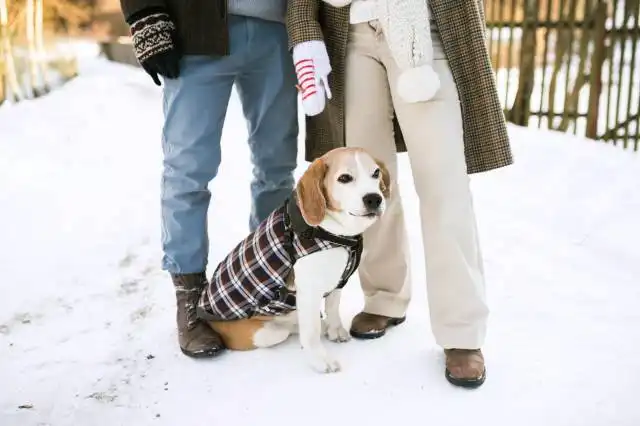Start a Sporting Goods Store
Turning Fitness Dreams into Reality: Launching Your Own Sporting Goods Store
| Updated


SPORTING GOODS STORE
Picture yourself surrounded by sleek helmets, huffing footballs, gleaming basketball hoops and a lot more. A Sporting Goods Store allows die-hard sports fans and fitness enthusiasts to step into a playground packed with sporting equipment and accessories, turning their fitness dreams into reality. As a new entrepreneurial venture, you'll be responsible for supplying local sports teams, gym freaks, joggers, cyclists, and all the amateurs and professionals alike with the gear they need. So, ready to kick-off your entrepreneurial inning with your own Sporting Goods Store? Play ball!
Jump to Business Plan
RELATED BUSINESS IDEAS
Browse ALL Retail & Shopping Business Ideas
Discover Your Perfect Domain
Unlock the door to your online success with our hand-picked selection of premium domain names. Whether you're starting a new venture or rebranding an existing one, the right domain can set the tone for your digital presence. Browse through our curated list, each with its unique potential to enhance your brand's visibility and credibility.
SPORTING GOODS STORE MINI BUSINESS PLAN
This a quick reality check to help you identify the strengths and weaknesses of your business concept before you dive in.
Expected Percent Margins:
- Gross Margin: 30-45%
- Net Profit Margin: 5-10%
Earnings Expectations:
- Daily Earnings: $400 - $800
- Weekly Earnings: $2,800 - $5,600
- Monthly Earnings: $12,000 - $24,000
- Annual Earnings: $144,000 - $288,000
Actions to Hit Those Figures:
Inventory Management:
- Initial Investment: Approximately $50,000 for diverse, quality inventory.
- Supplier Network: Build relationships with major sporting goods manufacturers and distributors.
Marketing and Customer Acquisition:
- Social Media: Post engaging content and promotional offerings 4-5 times a week on platforms popular with your target demographic.
- Local Advertising: Budget at least $1,000 a month for local advertisements or community sporting events sponsorships.
Sales and Customer Experience:
- Staffing: Hire at least 2-3 full-time staff, preferably enthusiasts in various sports.
- Up-Selling: Train staff in upselling and cross-selling techniques, such as selling related sporting accessories.
Cost Control:
- Rent: Choose a location where the rent is less than 5-10% of your expected monthly sales.
- Utilities and Maintenance: Budget conservatively, $500-$1,000 per month.
Business Operations:
- Open Hours: Operate for at least 6 days a week with 8-10 hours a day.
- Transaction Volume: Aim for 20-30 transactions per day with an average sale price of $50-$80.
Remember, these are generalized estimations and can vary greatly depending upon factors such as location, competition, and economic conditions. Consult with a business advisor or consultant for personalized guidance.
NOT WHAT YOU HAD IN MIND? Here are more ideas



Browse ALL Retail & Shopping Business Ideas
Grab Your Business Website Name
Before you get caught up in the whirlwind of setting up your business, invest in a domain name. It's a small but significant step that lays the foundation for your brand and makes it easier for customers to find and trust you. Just like you wouldn't build a house without securing the land first, don't build a business without securing your domain name.
"Why? Can't that wait?" Here's why it shouldn't
Step 1: Determine if the Business is Right Endeavor
Breakdown of Startup Expenses
Starting a sporting goods store requires a significant investment of capital. Before beginning the process, it is important to understand the costs associated with opening the store. This includes the cost of the physical location, inventory, and any necessary equipment. Additionally, the cost of any permits or licenses required to operate the business should be taken into account. It is important to have a thorough understanding of the costs associated with starting the business to ensure that the venture is financially viable.
Breakdown of Ongoing Expenses
In addition to the startup costs, there are also ongoing expenses associated with running a sporting goods store. This includes the cost of rent, utilities, and staff salaries. Additionally, the cost of insurance, advertising, and any other necessary services should be taken into account. It is important to understand the costs associated with running the business to ensure that the venture is financially viable.
Examples on Ways to Make Money
There are a variety of ways to make money with a sporting goods store. This includes selling merchandise, offering services such as repairs, and hosting events. Additionally, the store can offer custom orders, special orders, and discounts. It is important to understand the different ways to make money to ensure that the venture is profitable.
Step 2: Name the Business
When naming a business, it is important to choose a name that is memorable and unique. It should also reflect the type of business that is being started. For a sporting goods store, the name should be something that conveys the idea of sports or physical activity. It should also be easy to pronounce and spell. Consider using words that are related to the products that will be sold, such as “athletic”, “sports”, or “active”. Additionally, it is important to make sure that the name is not already in use by another business. Research should be done to ensure that the name is not trademarked or copyrighted. It is also important to make sure that the domain name is available for the business. This will help to ensure that customers can easily find the business online. Finally, it is important to make sure that the name is something that the business owner is proud of and will be comfortable using for many years.
Step 3: Create a Business Plan
Creating a business plan is an important step in starting a sporting goods store. The plan should include a description of the business, the products and services offered, the target market, the financial projections, and the strategies for achieving success.
The description of the business should include the mission statement, the goals of the business, and the type of business structure (sole proprietorship, partnership, or corporation). It should also include the location of the store, the size of the store, and the services that will be offered.
The products and services offered should include the types of sporting goods that will be sold, the brands that will be carried, and any additional services that will be offered, such as repairs, rentals, or custom orders.
The target market should include the demographic information of the customers that the store will be targeting, such as age, gender, and income level. It should also include the geographic area that the store will be targeting and any special interests that the store will be targeting.
The financial projections should include a breakdown of the startup expenses, such as the cost of the building, the cost of inventory, and the cost of advertising. It should also include a breakdown of the ongoing expenses, such as rent, utilities, salaries, and marketing costs.
The strategies for achieving success should include the marketing strategies that will be used, such as online marketing, print advertising, and word-of-mouth advertising. It should also include any special promotions or discounts that will be offered, as well as any partnerships or collaborations that will be formed. Finally, it should include any plans for expanding the business, such as opening additional locations or offering additional products and services.
Step 4: Secure Financing
Securing financing is an important step in starting a sporting goods store. There are a variety of sources of financing available to entrepreneurs, including traditional bank loans, private investors, and venture capital. Bank loans are usually the most accessible form of financing, but they typically require a good credit score and collateral. Private investors and venture capital firms are often more willing to invest in businesses that have a good business plan and potential for growth.
Calculating Startup Costs
Before applying for financing, it is important to calculate the startup costs for the business. This includes costs such as rent, inventory, equipment, and any other expenses associated with starting the business. It is also important to include a budget for marketing and advertising. Once the startup costs are calculated, the entrepreneur can determine how much financing they need to secure.
Calculating Ongoing Expenses
In addition to startup costs, it is important to calculate the ongoing expenses associated with running a sporting goods store. These expenses include rent, salaries, inventory, and any other expenses associated with running the business. It is important to have a budget for these expenses so that the business can remain profitable.
Benefits of Financing
Securing financing for a sporting goods store can provide numerous benefits. Financing can help the business purchase inventory, hire employees, and market the business. It can also provide the entrepreneur with the capital they need to expand the business and take advantage of new opportunities.
Step 5: Obtain Licenses and Permits
When starting a sporting goods store, there are several types of licenses and permits that must be obtained. Depending on the type of business, the location, and the services provided, the licenses and permits may vary. Some of the most common licenses and permits needed include a business license, a sales tax permit, a health permit, and a zoning permit. It is important to research the specific requirements for your area and business type to ensure that all necessary licenses and permits are obtained.
How to Obtain Licenses and Permits
Once you have determined the types of licenses and permits required for your business, you will need to apply for them. This process can vary depending on the state and local regulations, but typically involves submitting an application and paying a fee. You may also be required to provide additional documents such as proof of business ownership or proof of insurance. Once the application is approved, you will be issued the necessary licenses and permits.
Cost of Licenses and Permits
The cost of licenses and permits can vary greatly depending on the type of business and the location. Generally, the cost of obtaining licenses and permits is relatively low, but it is important to factor this cost into your startup expenses. Additionally, some licenses and permits may require an annual renewal fee, so it is important to factor in the ongoing cost of these licenses and permits.
Importance of Obtaining Licenses and Permits
It is important to obtain the necessary licenses and permits for your business in order to remain in compliance with local and state regulations. Failure to obtain the necessary licenses and permits can result in fines or even the closure of your business. Additionally, some customers may be hesitant to do business with a business that does not have the necessary licenses and permits. Therefore, it is important to obtain the necessary licenses and permits in order to ensure the success of your business.
Step 6: Choose a Location
When choosing a location for a sporting goods store, it is important to consider several factors. First, the location should be easily accessible to customers. It should also be in an area with a high concentration of potential customers. Additionally, the store should be located in an area that is not already saturated with other sporting goods stores. Finally, the store should be located in an area with a good reputation and a low crime rate.
Researching the Local Market
Once a potential location has been identified, it is important to research the local market. This includes researching the competition, the demographics of the area, and the local economy. It is also important to research the local zoning laws and regulations to ensure that the store will be in compliance with all applicable laws. Additionally, researching the local market can help the business owner determine what types of products to carry and what pricing strategies to use.
Negotiating a Lease
Once a potential location has been identified, the business owner should negotiate a lease with the landlord. This includes negotiating the terms of the lease, the length of the lease, and the rent amount. It is also important to negotiate any additional services that the landlord may provide, such as maintenance or security. Additionally, it is important to negotiate any restrictions that the landlord may have, such as the types of products that can be sold in the store.
Securing Financing
Once a location has been chosen and a lease has been negotiated, it is important to secure financing for the store. This includes researching financing options, such as loans, grants, and investors. Additionally, it is important to create a business plan that outlines the store’s goals and objectives, as well as the strategies for achieving them. Finally, it is important to create a budget that outlines the startup and ongoing expenses for the store.
Step 7: Purchase Equipment and Supplies
When starting a sporting goods store, it is important to purchase the right equipment and supplies to ensure that customers have access to the items they need. Depending on the type of sporting goods store you are opening, the types of equipment and supplies you need to purchase will vary. For example, if you are opening a store that specializes in outdoor sports, you will need to purchase items such as camping gear, fishing equipment, and hiking supplies. If you are opening a store that specializes in team sports, you will need to purchase items such as uniforms, balls, and protective gear. Additionally, you will need to purchase items such as shelving, display cases, and checkout counters.
Where to Purchase Equipment and Supplies
When it comes to purchasing equipment and supplies for your sporting goods store, you have a few options. You can purchase items from a wholesaler or a manufacturer. Wholesalers offer a wide variety of items at discounted prices, while manufacturers offer items that are specifically designed for your store. Additionally, you can purchase items from a local retailer or online. Purchasing items from a local retailer allows you to get a better feel for the quality of the items, while purchasing items online allows you to compare prices and find the best deals.
Cost of Equipment and Supplies
The cost of equipment and supplies for your sporting goods store will vary depending on the types of items you are purchasing and where you are purchasing them from. Generally, purchasing items from a wholesaler or a manufacturer will be more cost-effective than purchasing items from a local retailer or online. Additionally, you should factor in the cost of shipping and handling when purchasing items online.
Financing Options
If you are unable to purchase the equipment and supplies for your sporting goods store upfront, there are a few financing options available. You can apply for a business loan from a bank or other financial institution, or you can apply for a line of credit. Additionally, you can look into crowdfunding options or seek out investors who are willing to invest in your business.
Step 8: Market the Business
The eighth step in starting a sporting goods store is to market the business. There are many ways to market a business, and it is important to find the right mix of marketing strategies that will work for your store. Some examples of marketing strategies include online advertising, social media campaigns, email campaigns, and traditional print advertising. It is important to research the different options available and determine which ones will be the most effective for your business.
Developing a Brand
In addition to marketing the business, it is important to develop a brand for the store. This includes creating a logo, slogan, and other elements that will help customers recognize the store. It is also important to create a website and social media accounts for the store, which will help to spread the word about the store and its products.
Promotional Events
Another way to market the business is to host promotional events. These can include special sales, discounts, and other events that will draw customers to the store. It is important to plan these events in advance and to make sure they are well-advertised so that customers will know about them.
Networking
Networking is also an important part of marketing the business. This includes attending trade shows and other events related to the sporting goods industry, as well as connecting with other businesses in the area. This can help to build relationships with potential customers and can help to spread the word about the store.
Measure Results
Finally, it is important to measure the results of the marketing efforts. This includes tracking the number of customers that visit the store, the number of sales that are made, and the overall success of the marketing campaigns. This will help to determine which strategies are working and which ones need to be adjusted.
Step 9: Open the Store
Introduction Opening a sporting goods store is a great way to make money and give back to the community. It is important to take the time to plan and prepare for the opening of the store. This article will provide nine steps to help you start a successful sporting goods store.
Determine if the Business is Right Before starting a sporting goods store, it is important to determine if it is the right business endeavor. This includes researching the market, understanding the competition, and creating a business plan. Additionally, it is important to consider startup expenses, such as rent, equipment, and inventory, as well as ongoing expenses, such as salaries and utilities. It is also important to consider ways to make money, such as selling products, offering services, and hosting events.
Name the Business Once you have determined that the business is right for you, it is time to name the business. It is important to choose a name that is memorable and reflects the type of products you will be selling. Additionally, it is important to make sure that the name is not already in use by another business. It is also important to register the business name with the appropriate government agency.
Open the Store The final step in opening a sporting goods store is to open the store. It is important to plan for a successful opening day. This includes advertising the opening, stocking the store with the right products, and hiring the right staff. Additionally, it is important to make sure that the store is clean and organized. Finally, it is important to have a plan in place for any issues that may arise on opening day.
EXPLORE MORE CATEGORIES
Browse ALL Business Idea Categories
TAKE THE NEXT STEPS










